Saga of the Scythians
Like some Iron Age version of the Hells Angels, the fearsome nomads known as the Scythians drank, fought and conquered their way across ancient Eurasia. They also happen to be one of the earliest cultures on Earth to incorporate Cannabis into their practical and spiritual lives.
Who Were the Scythians?

The Scythians (sai·thee·uhns) were an Iranic tribe of nomadic equestrian warriors who lived in the Eurasian Steppes (a region of grasslands across Central Asia) from around 800 to 300 B.C.E. Much about the Scythian people remains a mystery. Since they didn’t have a written language, much of what we know about them comes from the writings of Greek historians — most notably the so-called “father of history,” Herodotus. From such accounts, along with archaeological evidence, anthropologists have been able to piece together a picture of Scythian culture.
For one thing, we know that they revered horses and were among the earliest civilizations to master the art of riding. Horses played a role in all aspects of Scythian life — be it for travel, herding, hunting or battle — and they equipped their steeds with ornate saddles, harnesses and armor. They reportedly even slept with and were buried with them; equine skeletons have been found alongside human remains in excavations of their sacred burial mounds, called “kurgans.” They were so closely associated with horses, in fact, that it’s believed the Greek myth of the centaur (a half-man, half-horse creature) was inspired by Scythian horsemen.
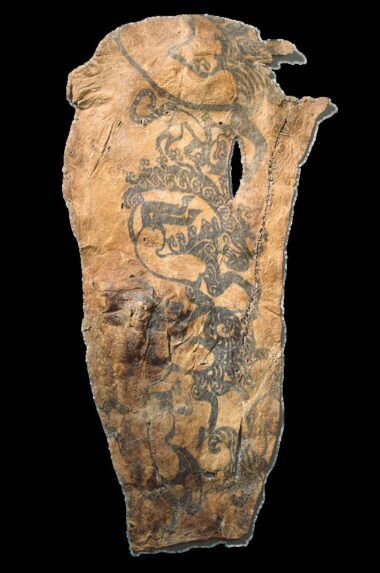
As for their appearance, we know they wore elaborately decorated clothing and armor, including tall pointed hats, tunics and various bracelets and plates made of gold and copper. We also know that they were heavily tattooed and that they would use the tattooed skin of their dead as a form of human leather.
Warriors, Women & Wine
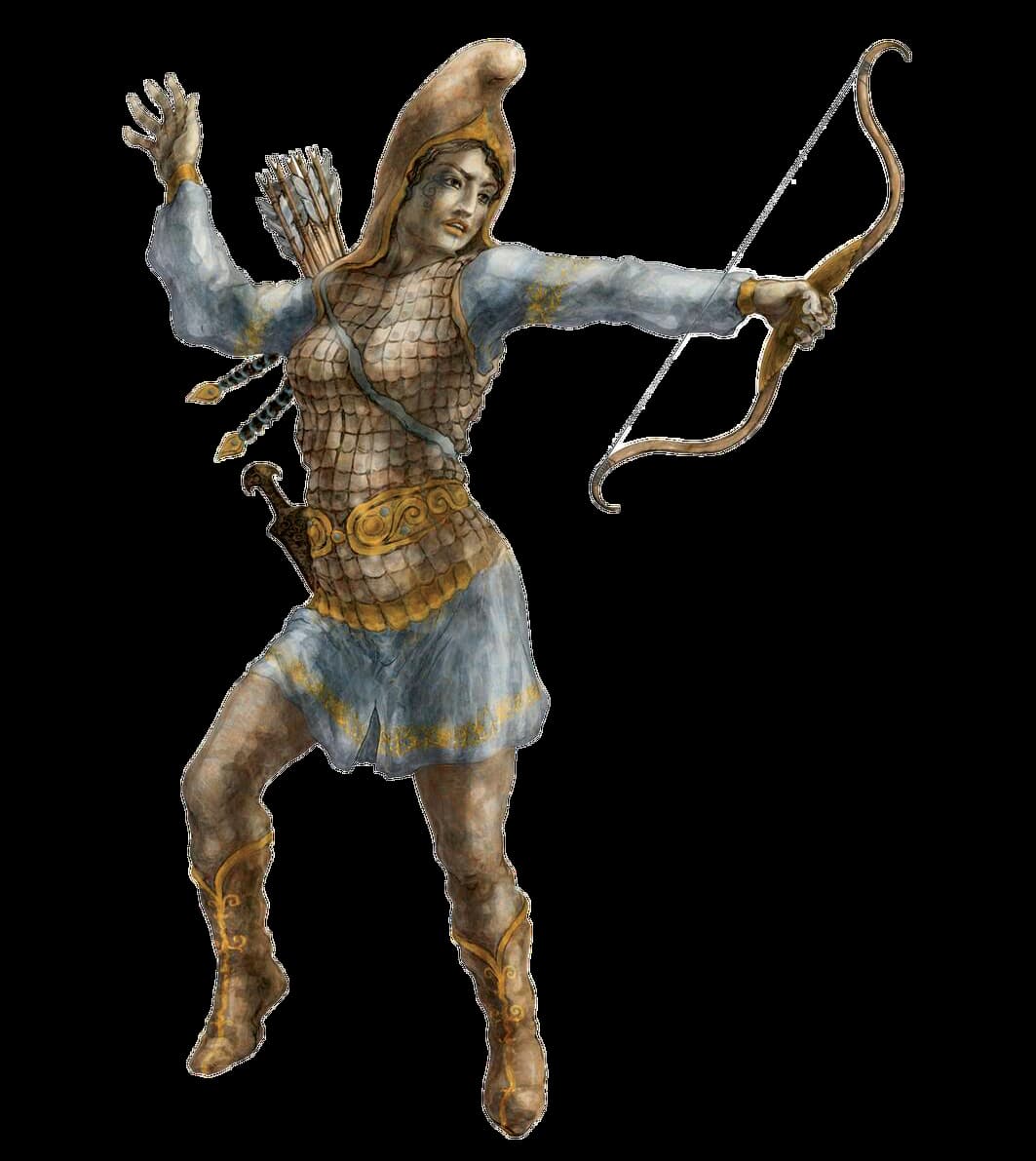
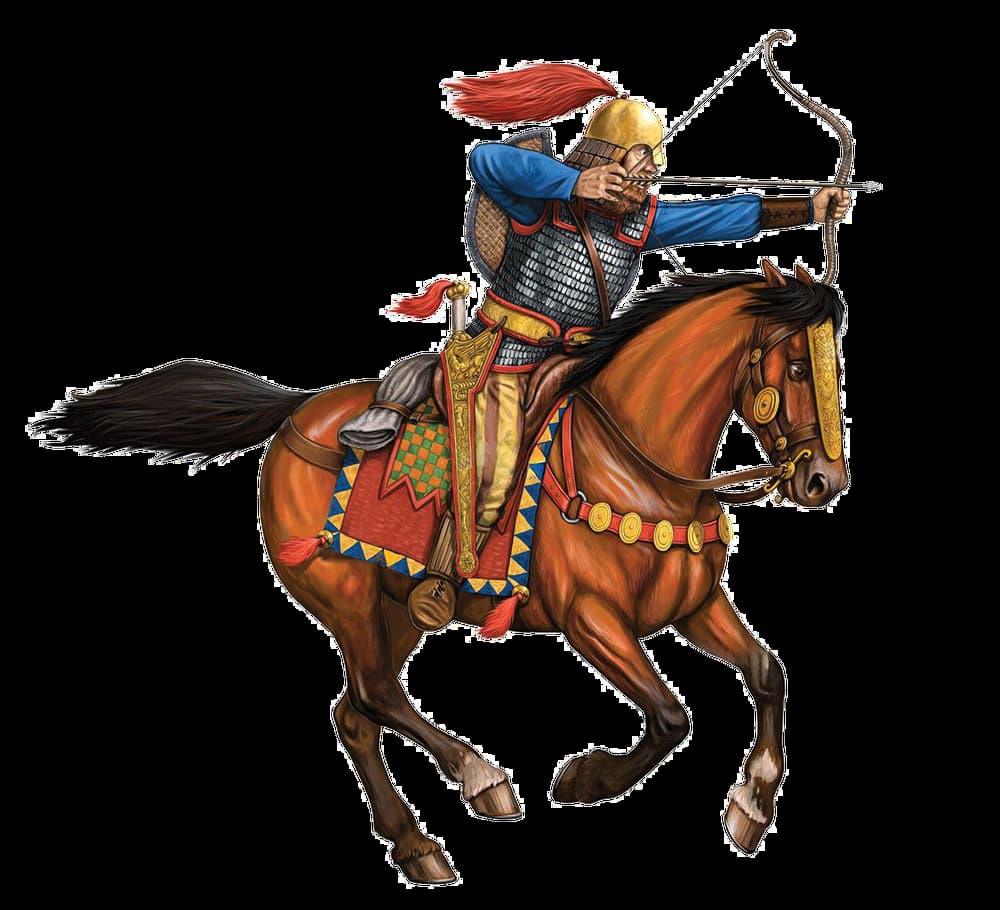
By all accounts, the Scythians were fearsome warriors. Centuries before Attila and the Huns or Genghis Khan and his Mongol hordes, it was the Scythian cavalry who terrorized Eurasia — conquering other tribes like the Thracians and the Cimmerians. (Fantasy fans will recognize Cimmerians as the tribe of Conan the Barbarian… in fact, the villains in the classic 1982 film starring Arnold Schwarzenegger are rumored to be partly based on the Scythians.)
Though they used a wide array of armaments (including spears, maces, battle axes and swords), their primary weapon was a short, composite, double-curved bow, which they shot with great accuracy even while riding. They were so renowned for their archery skills that Athenians allegedly employed Scythian slaves and conscripts as a primitive police force. In fact, it’s theorized that the name “Scythia” itself may come from the ancient Indo-European word skuza, meaning “archer.”
And unlike the Greeks and Romans, it wasn’t just the Scythian men who were warriors — their women were apparently just as fierce. According to Herodotus, these female warriors, who were “causing the Greeks to feel awe, fear and respect,” were none other than the Amazons — the fabled tribe of man-haters from which the superhero Wonder Woman arises, who he claims had assimilated and interbred with the Scythians after failing to conquer them.
In addition to their wild appearance and fighting females, there was another reason the West considered the Scythians barbarians: unlike the “civilized” Greeks, who mixed their wine with water, Scythians drank theirs straight up and to excess.
“To drink wine is the mark of a civilized man,” noted French historian Francois Hartog in “The World of the Scythians” (Rolle, 1980), “but to drink wine undiluted is the mark of a savage and represents a transgression.”
There’s another intoxicant, however, that they revered more than wine, and that was Cannabis.
Herodotus, Hemp & Hotboxing
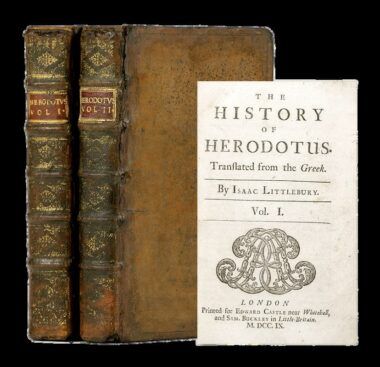
Wild Cannabis plants were undoubtedly plentiful across the Central Asian steppe by 10,000 B.C., so it should come as little surprise to learn that the Scythians were among the earliest cultures to utilize it. In fact, it’s believed that the names “Cannabis” and “hemp” actually originated from the Scythian word kanab — which, after its introduction to the Greeks became kannabis, then Cannabis in Latin. It’s also believed that the Proto-Germanic word for the plant, hanapiz — which later evolved into the Old Saxon hanap, then “hemp” — originated from Kanab.
Scythians wove hemp fiber into textiles and braided it into lariats and lassoes, which they used for herding and in warfare (which may also explain why Wonder Woman wields a “magic lasso”). Aside from its fiber, evidence suggests that they also incorporated Cannabis into their religious ceremonies — most notably their funeral rites. In Book IV of his 5th-century B.C.E. work “The Histories,” Herodotus explains that after a Scythian died, their loved ones would spend 40 days honoring them with feasts (during which the deceased was reportedly eaten!). At the end of this celebration period, they would engage in a purification ritual that essentially entailed hotboxing a teepee:
“They make a booth by fixing in the ground three sticks inclined towards one another, and stretching around them woollen felts, which they arrange so as to fit as close as possible: inside the booth a dish is placed upon the ground, into which they put a number of red-hot stones, and then add some hemp-seed. … Immediately it smokes and gives out such a vapour as no Grecian vapour-bath can exceed; the Scyths, delighted, shout for joy…”
Since seeds obviously don’t produce the kind of euphoric vapor that Herodotus describes, historians generally agree that it was likely Cannabis flowers that they were burning and that the seeds were simply what was left at the end. And remarkably, archaeologists have since found evidence to back up Herodotus’ tale.
Archaeological Evidence

In 1929, archaeologists discovered 14 Scythian burial mounds dating from the 5th to the 3rd century B.C.E. in a region along the border between Siberia and Kazakhstan known as Pazyryk. Upon later excavation of these frozen kurgans, they uncovered embalmed, heavily tattooed corpses and skins from the permafrost, as well as textiles, garments, furniture, riding gear, jewelry and pelts. Most tellingly, though, they found a wooden “hexapod” tent frame alongside copper censers (incense burners) containing charred stones, as well as a fur bag containing fossilized Cannabis seeds — direct evidence of the purification ritual described by Herodotus.
More recently, in 2013, another kurgan was discovered in the foothills of the Caucasus Mountains, 30 miles east of Stavropol in southern Russia — a 2,400-year-old site dubbed Sengileevskoe-2. After a month of excavating the burial chamber, Russian archaeologist Andrey Belinski and his team uncovered a stone box containing an astonishing seven pounds of solid gold relics, including jewelry, three thimble-sized cups and two ornate bucket-shaped vessels. Upon examination, Belinski noticed patches of sticky black residue inside the vessels. After sending them to Stavropol’s crime lab for analysis, the test results came back positive for both Cannabis and opium. These findings, along with other evidence suggesting that some form of roof or pavilion once covered the site, led scholars to believe that Sengileevskoe-2 “may have been the location of an intense ritual.”
“We now know the purpose was preparation of opium or a narcotic substance for sacred rites,” attested Professor Askold Ivantchik, director of the Centre for Comparative Studies of Ancient Civilizations at the Russian Academy of Sciences. “That Belinski detected the use of these substances is another proof the objects have cultic character.”
Having found no evidence of charring, however, Belinski ruled out the infamous smoke-bath ceremony. Instead, he surmised that the drugs were likely mixed into a drink that was consumed from the vessels, and therefore rather than a purification ritual, it may have been a ritual to communicate with the dead or the divine.
Haoma Gatherers
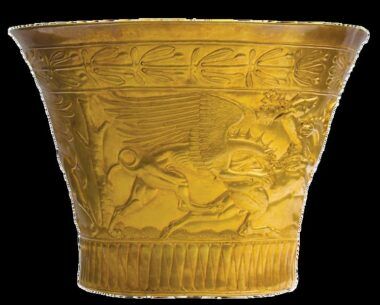
So what was this potent pot-laced potable, you ask? As it happens, there are accounts of just such a beverage — haoma, aka soma.
According to ancient texts, haoma/soma can refer to either a plant or an intoxicating drink made from that plant — both of which were considered sacred to the Vedic and Zoroastrian religions. Precisely what that intoxicating plant is has been the subject of speculation and debate for centuries. In George W. Brown’s 1890 book “Researches in Oriental History,” haoma is described as “…an intoxicating beverage, prepared from the green stalks of the moon-plant … Cannabis Indica, or Indian hemp … was tasted by the priests on sacrificial occasions, whilst hymns were sung in its praise. Its action was that of hashish. It produced intoxication and stimulation of the senses, which were taken for inspiration.”
The hypothesis that haoma contained Cannabis is bolstered by evidence uncovered by another Russian archaeologist named Victor Sarianidi, who found traces of Cannabis, ephedra and opium while excavating a site devoted to the preparation of haoma at the Bactria Margiana Archeological Complex near the Hindu Kush region of northern Iran and Afghanistan.
But other than the vessels discovered at Sengileevskoe-2, is there any other evidence that the Scythians drank haoma? Indeed — at the tomb of the Persian king Darius the Great in Iran, which dates to 490 B.C.E., the inscription carved in Old Persian cuneiform refers explicitly to “haoma-drinking Scythians.”
“The Scythian relationship with Haoma was indeed close — so much so that they were widely known as the ‘Haoma-Gatherers,’” Cannabis historian Chris Bennett explains in his 2010 book “Cannabis and the Soma Solution.” “Referring to the Scythians under their Persian name of the ‘Sakas,’ [Iranian author] Guive Mirfendereski notes that the Scythians of eastern Central Asia are called ‘Homa Saka’ and ‘haumavarka’ (Haoma-gatherers).”
Some scholars have even gone as far as to suggest that the name haoma itself may be a variation of the Chinese word hú-má, meaning “Scythian hemp.”
Up In Smoke
History paints a frightening yet fascinating picture of Scythian society: tribes of tattooed cannibals galloping across the steppes, guzzling wine, hotboxing weed and conquering any who opposed them like some sort of Iron Age Hells Angels. But alas, these historic hemp-smoking horsemen eventually succumbed to the ravages of their time — first diminished dramatically by the Sarmatians in the 3rd century B.C.E., then finished off by the Goths in the 3rd century C.E. Nevertheless, their enduring influence on both Asian and European cultures, as well as their connection to Cannabis, remains undeniable.










